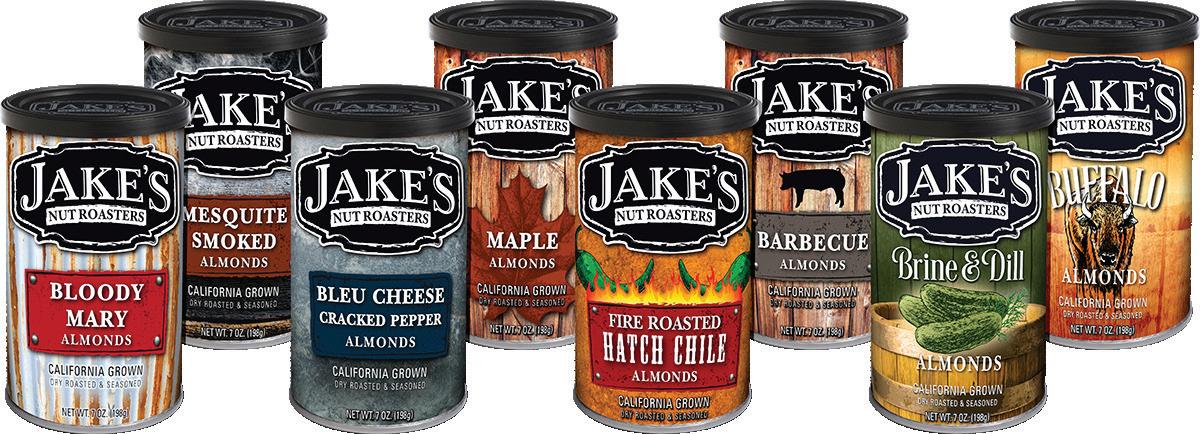





























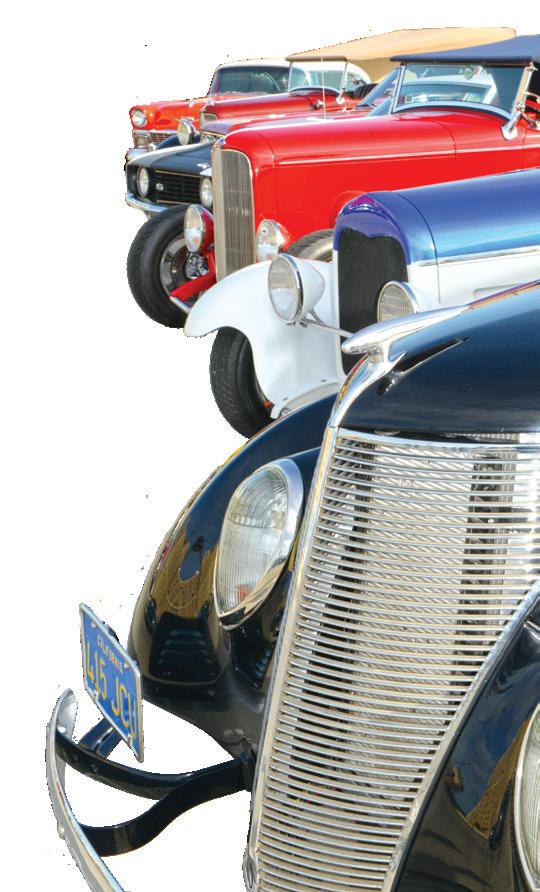
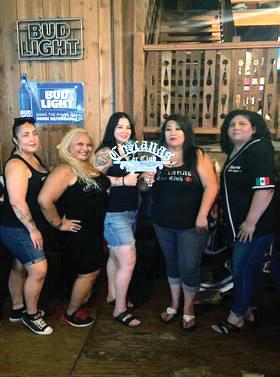
PUBLISHER/OWNER
Hank Vander Veen
EDITOR
Sabra Stafford
CONTRIBUTING WRITERS & PHOTOGRAHERS
Kristina Hacker
Marg Jackson
Alex Ramirez
Zachery Ramos
Vince Rembulat
CREATIVE DIRECTOR
Harold L. George
GRAPHIC DESIGNER
Sharon Hoffman
SALES
Chris Castro
Beth Flanagan
Rich Matheson
Karen Olsen
Corey Rogers
Melody Wann
Charles Webber
SPECIAL CONSULTANT
Larry Dovichi
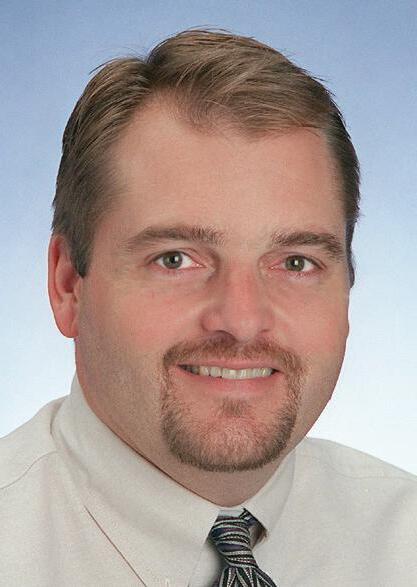
Graffiti summer is upon us again and we are thrilled to bring you the stories of the people, clubs and of course the classic cars that make this annual event so popular.
This yearly event is a beloved tradition for classic car enthusiasts and routinely brings in thousands of visitors to Modesto and the surrounding areas. Whether it’s the parade of classic vehicles through downtown Modesto and out to McHenry Avenue or one of the many car shows happening over the month of June, the Graffiti festivities are a special time of year for the community.
In this special issue of “Graffiti” we have highlighted some of the car clubs like the Modesto Area Street Rod Association that have become synonymous with Graffiti and the service club North Modesto Kiwanis, which every year does a spectacular job of organizing the Graffiti Festival and Car Show, which this year marks 25 years.
Read the stories of some of our 209 residents who undertook the task of refurbishing old cars into true stunners and the forming of the Chicanas Car Club that is eared toward women interested in the low-riding culture.
The Graffiti festivities remind us all of the qualities that make the 209 such a great place to live, work and play.
Hank Vander Veen Publisher hvanderveen@209magazine.com

 By ALEX RAMIREZ
By ALEX RAMIREZ
In the quiet town of Newman, nested in the Westside, resides Paul Blades, a man of many talents and passions. While his primary occupation is that of a crop-duster pilot, navigating the skies with precision and skill, his heart belongs to the ground, where he races alongside his family in a custom-built dragster.
“I got probably four or five cars that I’m working on, but I do the crop dusting around here too. You always see me flying the yellow airplane around,” said Blades.
Blades’s dragster has participated in Motors on Main in Gustine, for the third time. The dragster project was a heartfelt gesture for his son’s birthday. Eager to share the thrill of racing, he embarked on the creation of a dragster, envisioning memorable moments on the track with his son by his side. With determination, experience and ingenuity, Blades brought the 23 Bantam Body-based dragster to life, powered by a respectable 392 HEMI engine extracted from his own boat.
“I built it basically to race with my kids, so
we can go out and have fun on the weekends,” Blades mentioned.
The dragster, with its sleek design and powerful engine, with its weathered matte black body. The raised drag header with the supercharger raised high symbolizes more than just a racing vehicle — it embodies the bond between Blades and his family, a tangible expression of shared experiences and adventures.
Blades’s involvement in the automotive world extends beyond his dragster project. With a collection of classic cars under his belt, he is a fixture in Newman’s vibrant car community. Blades reflected on the Westside’s classic car culture, noting the presence of fellow enthusiasts, united by a passion for hot rods and custom builds.
“It’s a huge community of hot rodders and car builders and stuff. There’s a lot of them around here,” Blades mentioned.
In an era dominated by digital distractions, Blades is an advocate for hands-on pursuits,
especially among the youth. He encourages youth to nurture their curiosity and steer them towards tangible experiences.
For Blades, building cars is more than just a hobby. It’s a legacy passed down through generations. Recalling his childhood, he fondly remembers his brother’s drag racing days, igniting his own passion for the craft.
“My whole family’s been into cars, all my life,” said Blades.
Despite the challenges and expenses inherent in car building, Blades remains, finding fulfillment in the process itself. From conceptualization to realization, each project represents a labor of love.
“Doing this ever since I was a little kid, so it’s expensive but you know, you buy something old and build it up and I do almost all my own building of everything. You’ll learn things,” said Blades.
Blades gears up for another exhilarating race day in the future. He always looks for a better way to improve his dragster. ●


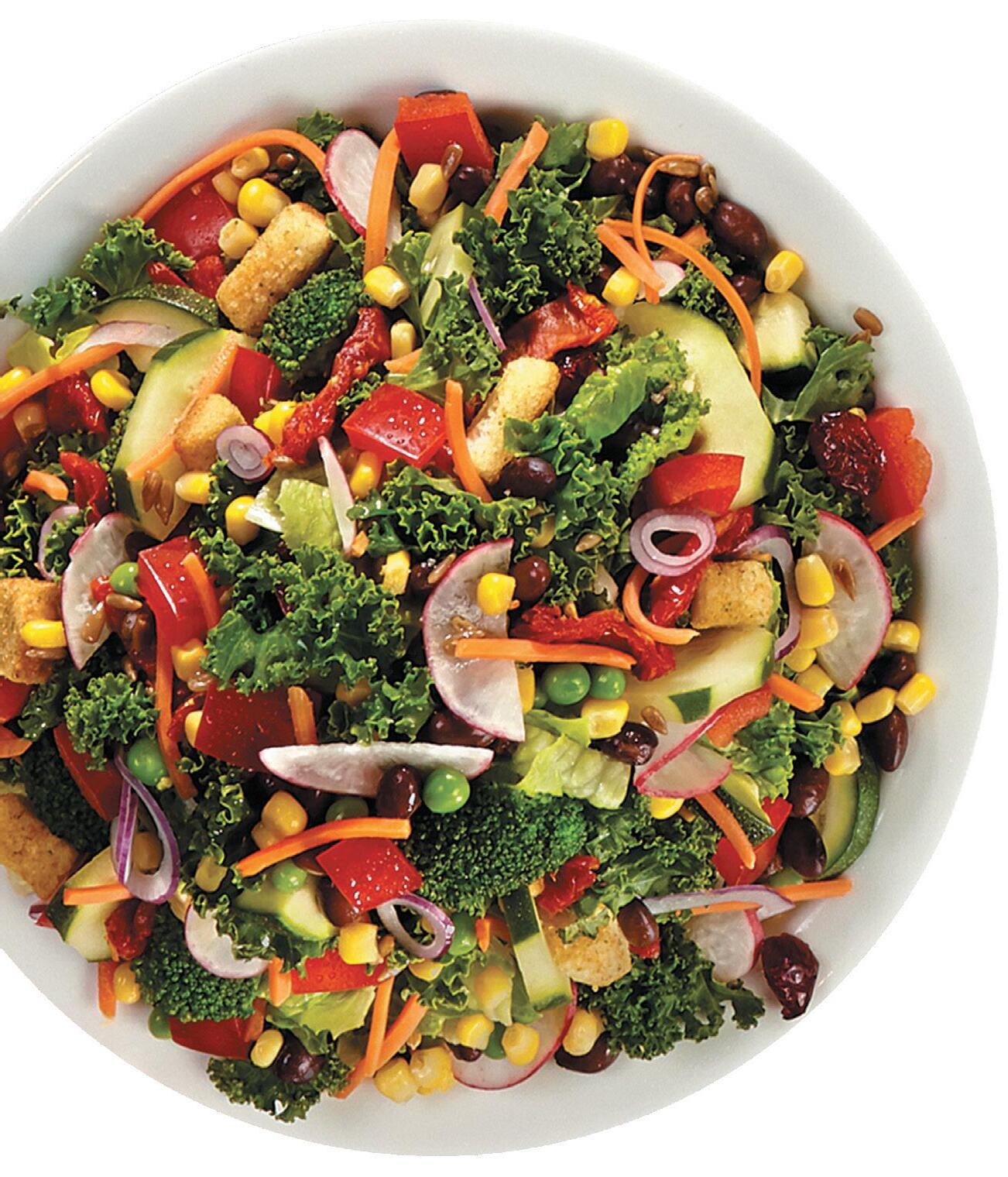








Three days of festivities celebrating Modesto’s connection to the classic car culture will rev up this June with the 25th Annual American Graffiti Festival and Car Show.
The American Graffiti Festival and Car Show is organized and produced by the Kiwanis club of North Modesto Foundation. All the proceeds from the event go towards local nonprofits.
The yearly celebration kicks off with the cruise of shiny and supped up classic cars and trucks on June 7. The parade starts at Five Points at 6:30 p.m. The route extends out McHenry to Briggsmore and then goes back downtown to include J, 10th and 11th, and I streets. The parade will include an estimated thousand vehicles from 1980 or older and is expected to last approximately two hours.

chapter of the Impala Car Club. The organization has held toy drives, turkey drives, car washes, and other activities to help people in need. Most recently, Rodriguez and the Modesto Impala Club organized to have cruising on McHenry removed from prohibition.
Police Chief Brandon Gillespie recently recognized the Modesto Impala Club for its “efforts and invaluable contribution to revitalizing the tradition of cruising in Modesto, deeply enriching our city’s cultural heritage and community spirit.”
The parade harkens back to previous decades when cruising 10th Street and later McHenry Avenue on Friday and Saturday nights was a right of passage for Modesto teenagers and inspired George Lucas’ “American Graffiti.” Now, the annual festival draws in thousands of visitors — some to relive the days of their youth and others who just want to marvel at the automobiles.
This year’s parade marshal will be Kiki Rodriguez, one of the four founders of the Impala Car Club, now an international organization of more than 1,000 members.
Rodriguez moved to Modesto in 1997 and started the local
“We are thrilled to have Kiki Rodriguez added to our legendary list of grand marshals for our 25th anniversary of the American Graffiti festival,” said Charlie Christensen, parade chairman on the festival’s Facebook page. “As a founding member of the Impala Car Club, Kiki was an obvious choice in continuing the tradition of honoring the superstars of the cruising culture.”
Rodriguez will be riding in a 1958 Impala convertible, the first year this model was produced by Chevrolet.
The car show and festival will be from 9 a.m. to 5 p.m. June 8 and 9 a.m. to 3 p.m. June 9 at the Modesto Junior College West Campus at 2201 Blue Gum Ave. The car show draws in an estimated 1,200 to 1,400 classic vehicles from both near and far. Admission is $10 per person and children 12 and under get in for free.
Taking the stage from 11:30 a.m. to 1:30 p.m. on June 8

is Rob Ely’s award-winning tribute to Elvis. From 2 p.m. to 5 p.m. the 25th Anniversary Graffiti Band will be performing. The performers will be Shelly Streeter, Claudia Streeter, Kyle Barker, Deb Ferrell, John DeJonge, Marty Martinez, David Avery, Dave Monday and Doug Robinett.
Steve Botello as Elvis will be walking the car show from 2 p.m. to 4p.m. on Saturday for photos and sing-alongs.
On Sunday, Cisco Kid, a War and Lowrider tribute band will perform from 11 a.m. to 1:30 p.m.
Cars and Coffee will join the show on Sunday with modern performance and exotic cars.
The awards will be presented starting at 2 p.m. on Sunday.
Those wanting to register their vehicle in the event can do so at https://americangraffitifestival.com/.../carshow.../ while spots are still available. ●
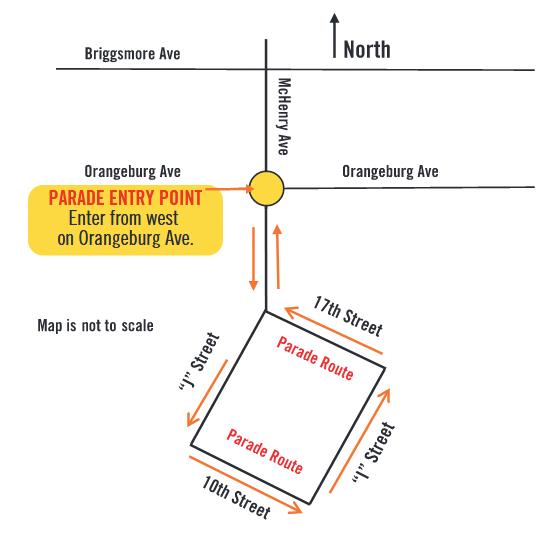



Modesto was forever linked with American car culture when native son George Lucas’ classic film “American Graffiti” came out in 1973. For decades, youth from around the region would cruise the streets of downtown Modesto on Friday and Saturday nights — until the fun turned into a safety hazard for residents and visitors.
Starting in the mid-to-late 1980s, the traditionally fun and celebratory weekend experience was the place of a number of violent acts, assaults and shootings. Upon recommendation of the Modesto Police Department, the city council adopted a cruising ban in 1990.
While the ban succeeded in decreasing violent acts committed while cruising Modesto city streets, a cherished cultural tradition was lost — until recently.
In 2022, city officials began meeting with classic car and cruising advocates, along with members of the police department to see if a compromise could be found.
The conversations led to the organization of two pilot cruising events in the downtown area of Modesto. Both permitted events were organized by a locally organized group, the Modesto Cruising Council, in collaboration with the Modesto Police Department. Both events were well organized, free of any violence, and the police department did not experience an increase in calls for service as a result of the events. Police department personnel assigned to the events only reported having to deal with minor equipment and parking violations during both events.
Following the successful events, the


Low-riding and cruising is a culture; it’s a lifestyle… the kids, the parades
— Felipe Pacheco
Modesto City Council considered repealing the cruising ban in 2023.
“After a 33-year ban on cruising in our community, I joined Jerry (Thompson) and Betty (Santos) to right a wrong. So much has changed since March 27, 1990. We have children and grandchildren now and cruising has become a family-oriented lifestyle. I felt that if we did not change the town of Modesto to once again embrace our heritage as Graffiti USA, we would lose it for future generations. I wanted to give back to the younger generations, something to cherish and respect — the great pastime of cruising. I want everyone to take it, run with it, but never lose it,” said Tina Tateo, with the Cruising Culture of Modesto group, to the Modesto City Council in July 2023. It wasn’t just the classic car community who was affected by the cruising
ban as Felipe Pacheco explained to the Modesto City Council in 2023.
“Low-riding and cruising is a culture; it’s a lifestyle…the kids, the parades. We’ve been involved in Cinco de Mayo parades, 4th of July parades and that all revolves around cars and cruising. That’s part of us being out there and showing off our cars. It brings a lot of people together. It brings cultures together. I was honored to be a winner at Graffiti and I talked to people from Arizona, Oregon, it just brings people together,” he said.
While there was some concern from a Council member about out-of-towner coming to Modesto for cruising and causing problems, such as vandalism, the majority of council members and community members were in favor of the repeal of the ban.
“Lifting the cruising ban is the right idea at the right time for Modesto. And lifting this ban is a tribute to effective local government. The community, law enforcement and local government worked together to find the right solution to celebrate our culture,” said Vice Mayor Chris Ricci.
Following a number of impassioned comments, the council voted to appeal the ban and once again allow cruising in the city of Modesto. ●




Newman’s Dan Gomes’s passion for classic cars runs deep, evident in his eclectic collection that spans generations of automotive history. Currently, his focus lies with a 1958 Chevy Yeoman wagon, a labor of love that epitomizes his dedication to preserving and restoring vintage vehicles.
Gomes’s journey with classic cars began decades ago, with notable projects including a meticulously restored 1972 Chevy Blazer and shared ownership of a 1964 Impala SS and a 1957 Chevy Bel Air alongside his father. However, it’s his latest endeavor with the ‘58 Yeoman that has captured his attention and enthusiasm.
Imported from North Carolina approximately six months ago, the ‘58 Yeoman arrived at Gomes’s workshop as a blank canvas awaiting transformation. Originally equipped with a modest straightsix engine and three-speed column shift, Gomes’s vision for the Yeoman encompasses significant upgrades and
personal touches to elevate it to new heights of performance and style.
“I’m fixing things here and there that are broken or what I want to change to make them more personal to me,”
Gomes explains, detailing his meticulous approach to the restoration process. “It’s now equipped with a 350 engine and a four-speed transmission, along with coil-over suspension, updated paint, interior enhancements, and custom wheels.”
For Gomes, the allure of the Yeoman lies in its rarity and distinctive character. As he recounts the arduous journey of acquiring and restoring the wagon, it becomes evident that this project represents more than just a vehicle—it’s a testament to perseverance and passion. “It took me about three years to find it,” Gomes shares, reflecting on the challenges of locating such a unique specimen. “I went through nine months of paperwork back and forth, unsure if it was going to work out due to the complexities of obtaining a title from
North Carolina, one of the toughest states in this regard.”
Despite the hurdles, Gomes’s determination prevailed, culminating in the successful restoration of the ‘58 Yeoman. With its gleaming stainless steel trim and immaculate molding, the wagon stands as a testament to Gomes’s craftsmanship and dedication to preserving automotive history.
“Only produced for one year, the ‘58 Yeoman is a rare breed,” Gomes remarks with pride. “You don’t see them around often, especially in California. It’s a different car, a unique find that adds character to my collection.”
As Gomes continues to fine-tune his beloved ‘58 Chevy Yeoman, he remains steadfast in his commitment to honoring the legacy of classic automobiles, one restoration at a time. For him, each project is not just about cars but about preserving memories and embracing the timeless appeal of vintage vehicles.●
Johnny Verissimo’s journey with his 1958 red Chevy Impala is a tale of love at first sight, fueled by childhood memories and cinematic inspiration. Recalling his formative years, Verissimo, who resides in Gustine, reminisces about attending the American Graffiti Car Show in Modesto, where he encountered a black ‘58 Impala nestled amongst a sea of classic automobiles.
“I saw a black 58 Impala just sitting there by itself, kind of off to one corner between some trees and bushes. I fell in love with it,” Verissimo said. “That was a black 58 Chevy Impala, and right next to it was a black 59 Chevy Impala. Those two cars looked super cool.”
Years later, Verissimo’s quest to fulfill his automotive dreams led him to an online listing for a ‘58 Impala in San Jose.
“I saw this car online, it was located in


San Jose, California,” Verissimo said.
“The guy was going through a divorce. He was asking a lot of money for it, but he ended up selling it to me at a discounted price because he said that he wasn’t going to split the money with his wife anyway.”
Owning the ‘58 Impala was not without its challenges. Sacrifices were made, including parting with cherished vehicles and seeking financial assistance from a friend.
“I had to sell two old cars that I had to get cash, and I also borrowed money from a friend of mine to raise enough cash to buy that car,” he said.
Since acquiring the Impala in 2003, Verissimo’s bond with the car has only grown stronger.
“I’ve been in love with that car ever since,” he said. “It’s the first year they
made Impala. The first car they made with the forehead lights, right? It’s the only car from Chevy that looks like that from that year on. I’ve owned that car ever since.”
For Verissimo, the ‘58 Impala is more than just a car; it’s a tangible link to his past, a repository of cherished memories, and a testament to the enduring allure of classic American automobiles.
“It’s always something you’re working on,” Verissimo said. “Like right now, the radiator blew on it. So, I’ve been looking around for radiators... It’s always a journey.”
As he cruises down the open road, the strains of “Bad to the Bone” by George Thorogood serve as a fitting soundtrack to his journey, embodying the rebellious spirit and timeless appeal of his beloved ‘58 Chevy Impala. ●







 NBy MARG JACKSON
NBy MARG JACKSON
othing says ‘American Graffiti’ quite like cruising down McHenry Avenue and no local club does that better than the Modesto Area Street Rod Association.
The group of classic car enthusiasts hosts the kickoff event for Modesto’s Graffiti Summer and this year, their Graffiti Classic Car Show is scheduled for June 2.
Club member Ray Lee serves as chairman for the show and he said it is a great way to showcase some favorite classics.
“We encompass the entire interior of McHenry Village at McHenry and Briggsmore,” Lee said of packing cars into the parking lot of the shopping center. “We get about 500 classic cars and our show is very unique because it’s in the interior of a shopping mall; the businesses are open and it’s just a unique venue.”
Hours for the show are 9 a.m. to 3 p.m.; McHenry Village is at 1700 McHenry Ave., Modesto.
“The mall itself lends to that uniqueness, it is the oldest shopping center in Modesto,” Lee said of staging the show along McHenry, famous for the long-ago weekend cruising that inspired the George Lucas film “American Graffiti.”
This is the 17th year for the club’s annual Graffiti Classic Car Show. The first four years were held at the MJC West Campus, said Lee,
and the last 13 years have been at the current location, the McHenry Village Shopping Mall.
A highlight of the 2024 show will be the Pontiac Corral, with numerous models and years represented.
The club has been in existence since 1975, with the requirement that members had to own a 1948 or older vehicle. In 2012, the club amended the bylaws to allow for pre-1973 classic cars.
Members of the club gather twice a month for a business meeting and dinner.
“We get together for a lot of different car shows,” Lee explained of the members, adding that they like to support other car clubs around the region. “We travel up and down the Valley.”
The local group also does a great deal of charitable work, raising funds for various causes, and helps support the Graffiti USA Classic Car Museum in Modesto. The club also is noted on the historic Cruise Walk of Fame downtown.
Lee said their kickoff event on June 2 is just the start of a hectic, but fun, week for club members as Graffiti Summer revs up into high gear.
Lee said the whole week brings back a lot of good memories of a simpler past.
“It’s one of those things; I was always involved in cars, my dad got me involved,” he said. “A group of us would get together and cruise on the weekends, we’d meet up on McHenry … we just had that common bond with classic cars.”
With the kickoff car show serving as a fundraiser for local charities, Lee said it’s a good feeling to know the club can help people and organizations in need while having the chance to share their love of classic cars along the way.
“It’s hectic for us because for a small club, we put on a big show and we’re very proud of it,” Lee explained. “We get cars for all over and it’s a fundraiser for charity, for non-profits … that’s what we really do it for.” ●





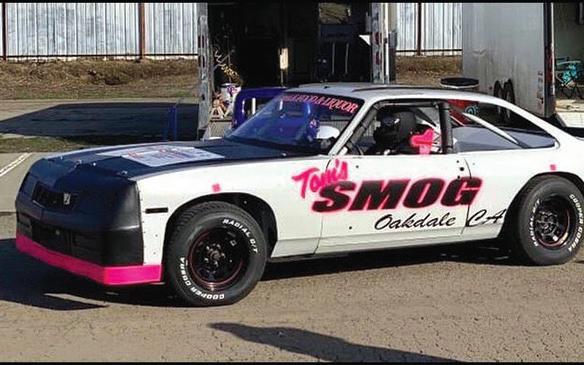



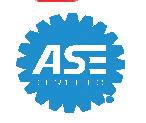





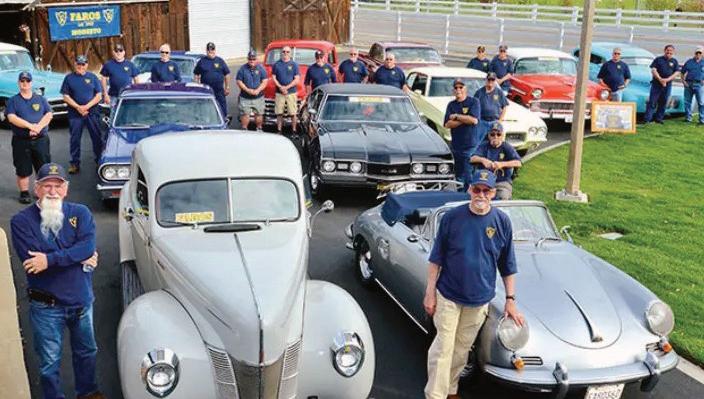
About a year ago, the City of Modesto lifted the cruising ban after 33 years – the ban was “a quality-of-life concern,” according to police, due to the number of vehicles, traffic, littering, and loitering coupled with the increased violence towards the end of the 1990s.
The news of that was welcoming, especially to car clubs such as the Faros.
They were memorialized by famed producer and director George Lucas prior to his delving into that galaxy far, far away. “American Graffiti” was his love letter to his hometown, and the Faros – they were the ‘Pharoahs’ in the 1973 film classic – were part of Lucas’ experience of growing up in Modesto.
He lived next door to Garry Second, who was an active Faro. They both graduated high school in 1962. The two reunited in 2013 at the American Graffiti Parade, where Lucas had honor by being named grand marshal. Second, who passed away in 2018, was an early Faro, joining the car club
in 1962.
While he was not a Faro, Lucas was a typical teenager of those days, enjoying the nightly ritual of cruising along 10th Street – the Modesto Historic Cruise Route Hall of Fame is located in the 10th Street Plaza, with the Faro Car Club being inducted in 2016 with a framed certificate and plaque with their name placed in the sidewalk on 10th Street, between J and K streets – harboring dreams of being a race car driver before he was involved in a life-changing car crash.
The origins of the Faro can be traced back to 1957.
Modesto High students John Husband, Chuck Billington, and several others created the name with the FRS crest and membership cards. That lasted about two weeks – the Dean of Boys at the school pulled the plug on those plans, warning them that they would be expelled if they continued the club.
But then in 1960, seven guys –namely, Joe Wylie, Dennis Billington, Harry James, Larry Baker, Ron Gon-
calves, and Chris and Wayne Ludvickson – rekindled the idea of the Faros by making it a reality.
They still had the Faros membership cards from 1957, and decided to keep the name.
The Faros back then were hardly the hoodlum gang depicted in American Graffiti. They had their fair share of fun – dragging, cruising, looking for girls, beer parties, etc. – but they were also involved in community activities.
The muscle cars of the day included the likes of a ’57 Chevy or 1940 Ford Coupe. The Faros transitioned from a fraternity to car club in 1961 as members sported “FAROS MODESTO’ car plaques.
In order to become a Faro, members were voted in (100 percent ‘yes’ votes were required) and to go through some sort of initiation, which varied over the years.
“We didn’t have blood initiations, as in the movie,” said Ron Pippin, who was among the added members to the growing club.
Included were likes of Darrell
Bailey, Daryl Weitl, Larry Landis, Larry Williams, Al Schaeffer, Harold Bowen, Jerry Jackman, Don Podesto, John Van Nordstrand, Jay Salter, Don Bradley, Rick Hudson, Adolf Mauksch, Steve Roberts, Johnny Mercer, Steve Martin, Bill Fliflet, and Bruce Schafer.
Many such were inspired by “American Graffiti.”
By the 1970s, club members cruised McHenry Avenue, from Five Points to McHenry Village. Racing often took place on the east side mosquito abatement runway.
Today, the Faros have 155 club members and over 32 active members. They meet once a month in a private club house in Oakdale. They’re involved in various endeavors, from fundraisers to the annual American Graffiti Festival & Car Show on the weekend of June 8-9. The Faros are a nonprofit organization.
With the cruising ban lifted, Pippin and others are once again enjoying their Friday nights on McHenry Avenue. Pippin will drive his 1932 Ford, ’44 pickup, ’55 Chevy pickup, or ’61 Corvette.
“We’re still out there. Only we’ve matured,” Pippin said. “Once a Faro, always a Faro.”
Visit www.faroscarclub.com to learn more. ●

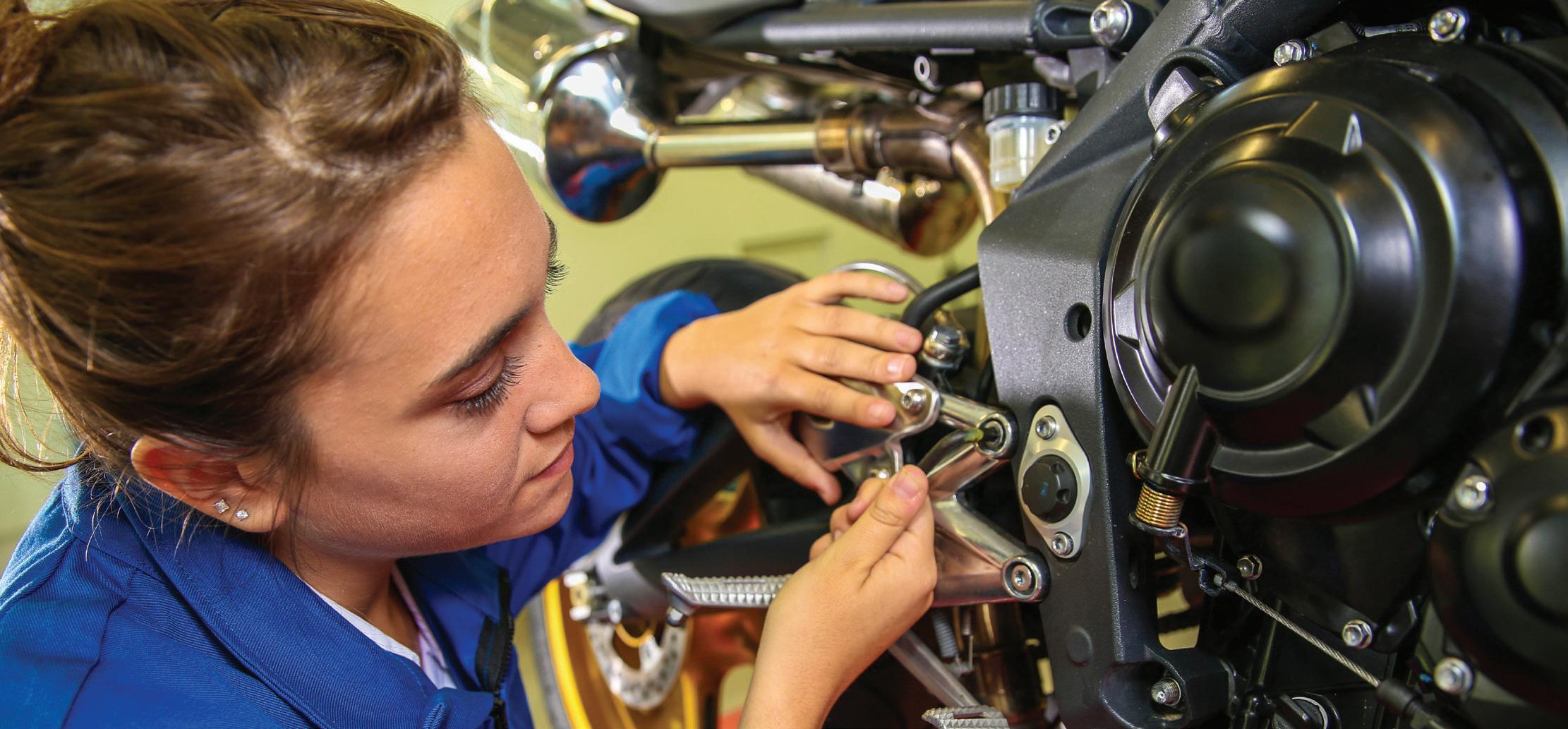
Turn your passion into a career. Let us help you build your new website. Visit us at 209multimedia.com/webdesign to get started.

The Graffiti USA Classic Car Museum, a monumental volunteer-run project funded by donors, is geared towards celebrating Modesto’s Classic Car culture and “Graffiti Summer” all year round. Over the past three years, the 55,000-square-foot Lyng Building, built in 1938, has been undergoing significant renovations to revitalize the structure while laying a strong foundation for the future. The museum is at 610 N. 9th St., Modesto.
Over the past 18 months, vital work has been performed, including the installation of a fire sprinkler system. Beam reinforcements were carefully fitted throughout the building, thanks to generous donations from CT Brayton and Sons, Modesto Steel, and Bambacigno Steel Company. Collins Electric assisted with moving a power pole, relocating service, and installing a new transformer. An entirely new electrical system is being woven into the fabric of the building to power exhibits, lighting, and safety systems.
Over the last six months, the Museum parking lot has been completely overhauled. In November, a small outbuilding was demolished in the Coldwell parking lot to make way for additional ADA parking and provide improved access to the building. In December, the parking lot was demolished to make way for a new storm drain system, which was funded
by monetary donations from Boyett Petroleum, Joseph Bondi, Beard Land Improvement Company, and Allan & Pat Ramsay. Generous donations from the Reed Family of Companies paved the way to completing a vital portion of the project, providing the Museum with a completely new parking lot, curbs, gutters, and sidewalks. An elevated pad for the new entrance to the Museum, steps, ADA ramps, and a vehicle ramp were generously donated by Burkett Companies. Once handrails are installed, the parking lot is striped, and the landscaping project wraps up, the Museum will reopen with limited hours. Visit graffitiusamuseum.com for the most up-to-date information.
In the meantime, Graffiti USA Classic Car Museum continues to operate their Classic Car Dealership, providing private owners with car sales services by consignment. Over the last two years, the Museum has sold over 40 vehicles to new owners located throughout California, across the country, and overseas. Vehicles are marketed online and in print with Hemmings, Auto Trader Classics, Classiccars. com, Cruisin’ News, and beyond. As a result, potential buyers contact the Museum daily to inquire about the cars for sale. Potential buyers are able to test drive vehicles by appointment, can opt to have the vehicle independently evaluated prior to purchase, or have it shipped
to their location. All consignment fees earned directly support the Museum, a 501(c)(3) non-profit. Current classic cars for sale can be viewed at: graffitiusacarsales.com
Throughout Graffiti Summer, the Museum will engage with the community through its outreach booth. It will participate in numerous car shows and community gatherings, sell Graffiti Summer commemorative merchandise, and distribute information about local car shows and events.
The Museum’s outreach booth offers children’s activities such as a car customization station where kids can decorate their own toy cars. Additionally, a new mobile cutaway motor exhibit will be showcased. This exhibit includes a variety of motors, each displayed at eye level on a custom trailer for ease of viewing. This interactive exhibit provides children with an educational experience about mechanics and automobiles.
The Graffiti USA Classic Car Museum actively engages with the community through various programs and events. In partnership with the Faros Car Club, Modesto Area Street Rodders, and Visit Modesto, the museum is organizing the Legends of the Cruise Wednesday Night Park ‘N Shine in downtown Modesto on June 5, 2024. Offering everything from children’s activities to car shows, the museum provides opportunities for all ages to
learn, connect, and be inspired.
The future is bright: Graffiti USA Classic Car Museum has been selected as the future home for the Central Valley’s state-designated visitors center. The California Welcome Center will offer locals and visitors an opportunity to learn about fascinating things to do in Stanislaus County as well as at other tourist destinations across the state. The California Welcome Center will be open daily and be a convenient first stop for tourists with the Museum’s proximity to Highways 99 and 132. The Graffiti USA Classic Car Museum will also serve as the future home of the Modesto Radio Museum. The Modesto Radio Museum Foundation has already launched their new radio station, “Graffiti Gold”. Enjoy sounds by legendary Modesto radio DJs at The Museum aims to achieve $3 million in donations for their Founder’s Campaign over the course of the summer. Donations will help bring this 55,000 square foot space to completion, including the build out of the new museum lobby, gift shop, California Welcome Center, restrooms, exhibits, education center, event center, and more. Once complete, visitors will experience immersive exhibits,
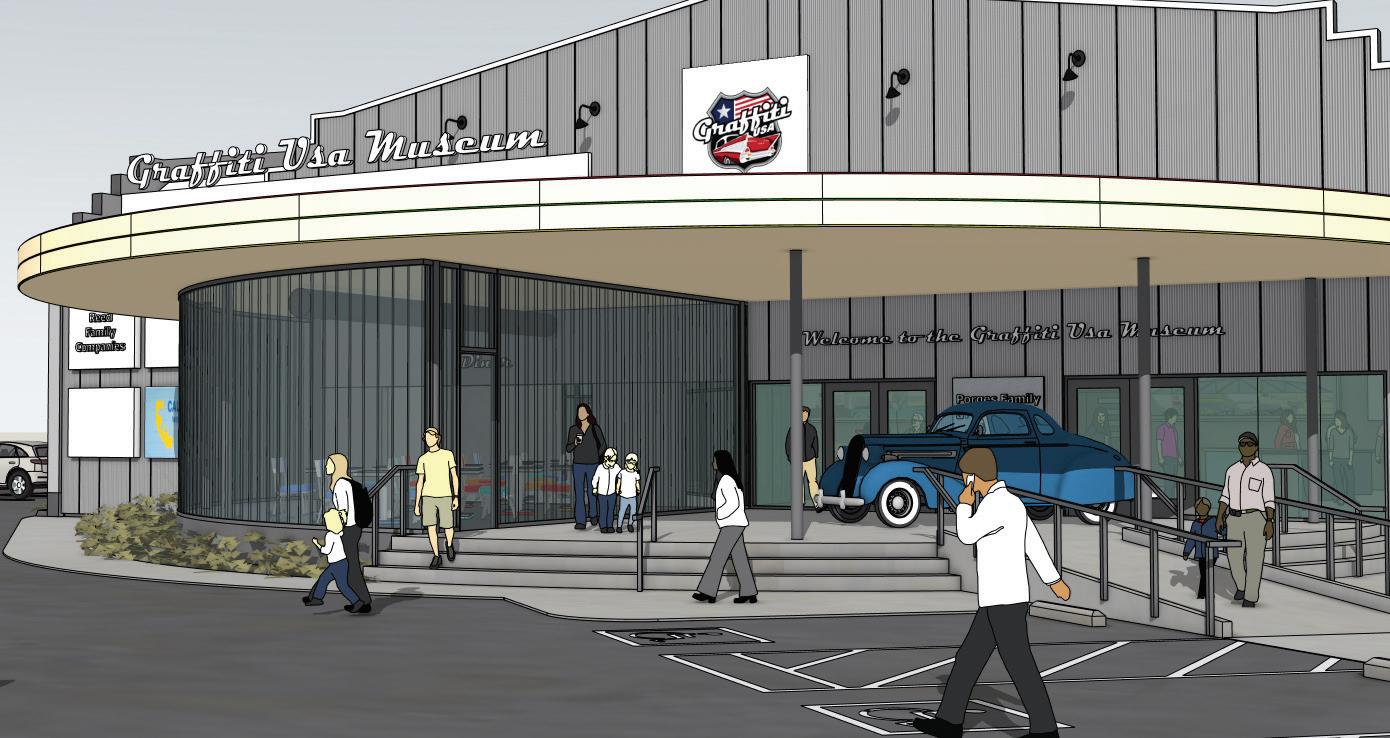
including replica storefronts from the ‘50s and ‘60s, multimedia displays, simulators, and more. All construction funds are spent with local contractors, reinvesting donations back into the local economy. Donor benefits will be awarded at the time of the Museum’s Grand Opening, once construction is complete. All donations above $1,000 will be recognized and commemorated in the museum.
The Museum has two upcoming fundraising events. All proceeds earned from these events will support ongoing Museum construction projects.
On June 15, 2024, bring your blanket and lawn chair to the Del Rio Country Club for the Legends Under the Oak Tree Concert. Journey



Revisited and opener CCseger will sing the best of Journey, Bob Seger, and Creedence Clearwater Revival during this fun filled evening on the green. Gates open at 7 p.m.; show starts at 8 p.m. Open to all ages, parking provided, $50 advanced general admission via the State Theater box office, or $60 admission at the gate, cash only. All proceeds earned from the ticket sales of this event support the State Theater and Graffiti USA Classic Car Museum.
On October 4, 2024 Hagerty Presents an Evening with Wayne Carini, American car restorer, from the acclaimed television series, Chasing Classic Cars. Museum patrons will join Carini for an evening of cocktails, dinner, programming, and a live auction. All proceeds earned from this event will fund the Graffiti USA Classic Car Museum’s Education Center. This exclusive event will be limited to 200 attendees. Ticket sales are forthcoming and will be available via the museum website prior to the event. ●
This article was provided courtesy of Carly Russell through the Graffiti USA Classic Car Museum.


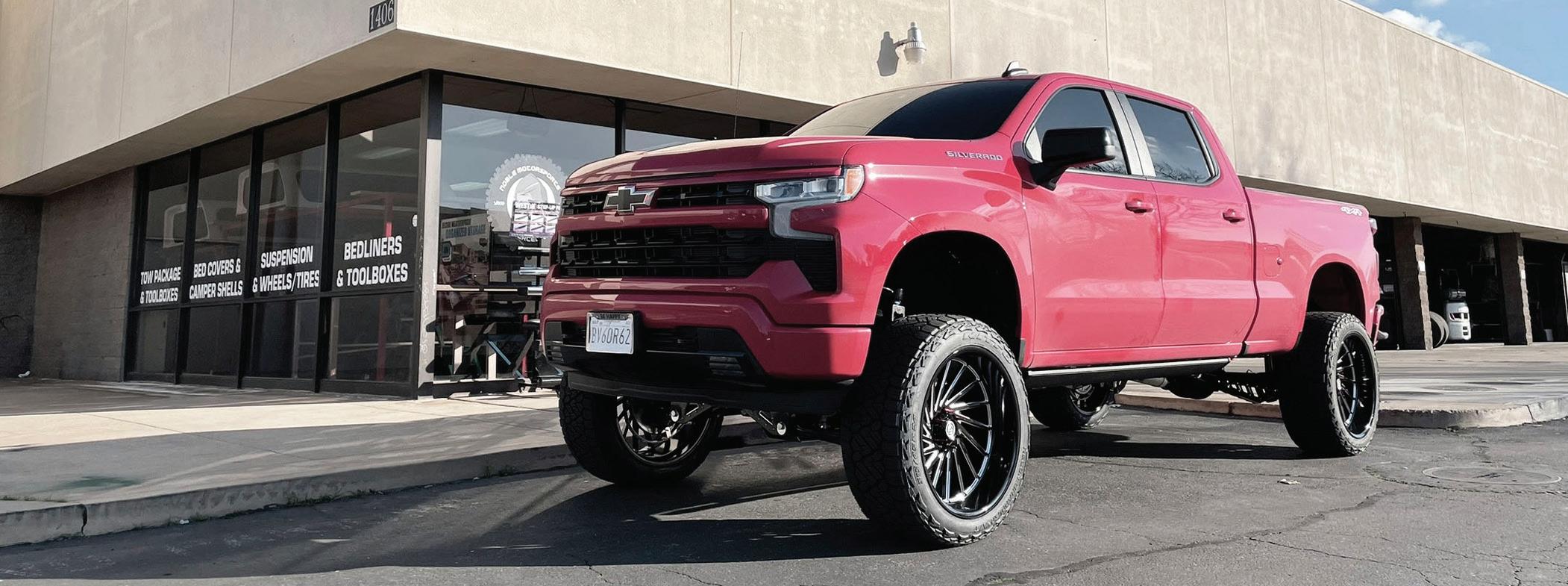
NOBLE MOTORSPORTS has been serving the Central Valley for over 18 years. We offer a full line of accessories for all of your vehicle needs. whether you want a full overhaul or just need to get set up for work, here at Noble, we do it all. We are a one stop shop for all of your automotive accessory needs. We have qualified techs on site as well as a top notch sales team to answer all of your questions. STOP BY TODAY and you wont be disappointed.
two locations to
WE ALSO OFFER: -Wheel & Tire Packages -Lift kits & Lowering kits -Tow Packages -Tool boxes and Cargo Solutions -Campershells and Bed Covers -Alignments and Much More






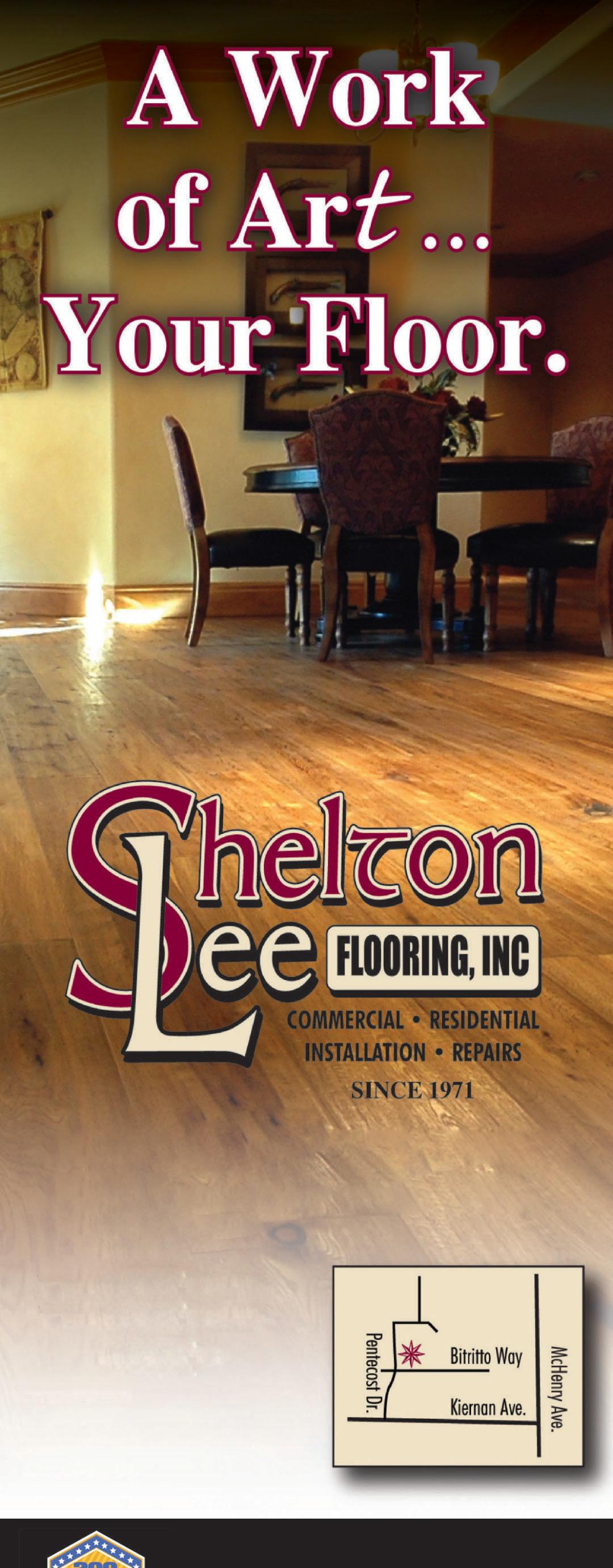
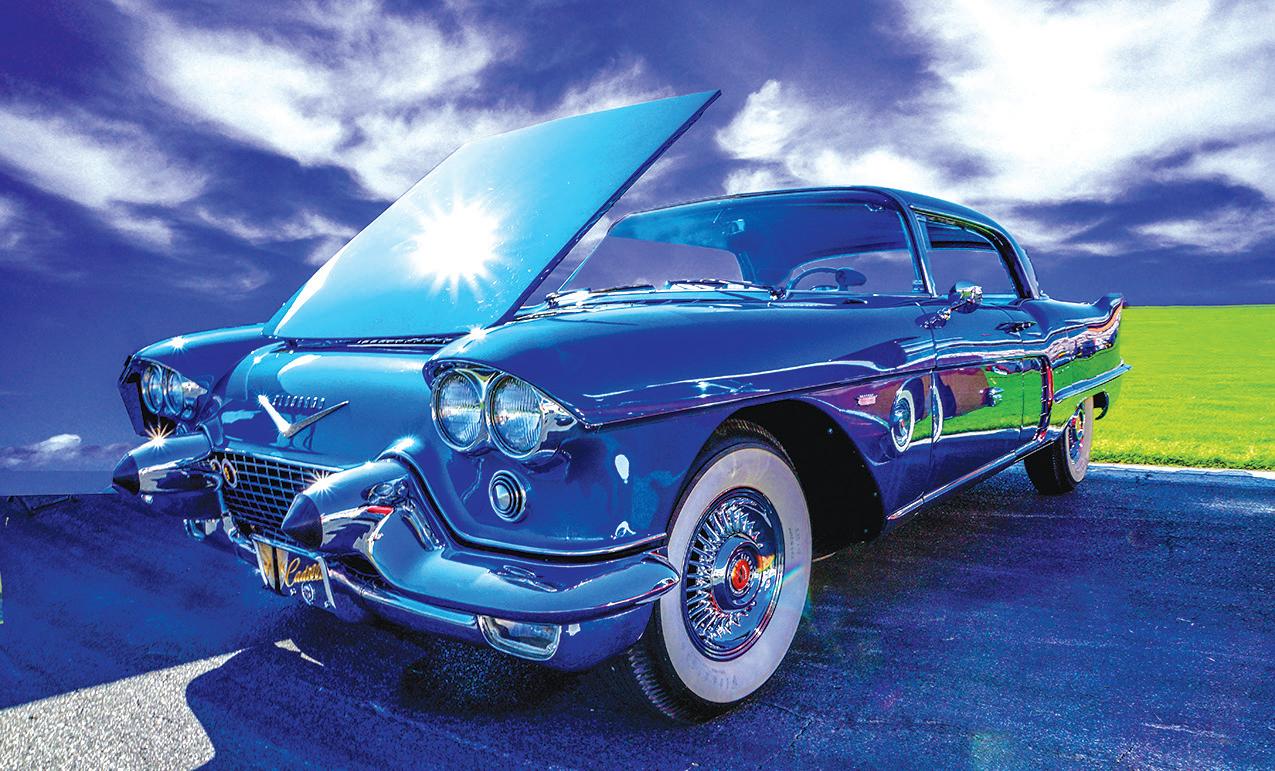
They’re eye-catching, often exotic and always call to mind a bygone era. Classic cars are undeniably unique and their unrivaled automotive appeal has inspired legions of fans. That appeal also has compelled many to try their hand at classic car restoration. Restoring a classic car can be a rewarding hobby, particularly the first time a vehicle emerges from its owner’s garage and hits the open road. Car buffs interested in restoring a classic car of their own can consider various factors before they lift the hood on this challenging yet rewarding hobby.
It’s hard to know if a classic car restoration will cost owners more time or money, but restoration novices should expect to spend a lot of both as they work to restore a ride to its former glory. CarsDirect.com estimates that a restoration done by a professional shop can cost anywhere from $40,000 to $60,000, and that does not necessarily include the cost of the vehicle. If the financial commitment raises an eyebrow, perhaps would-be car guys and gals should look away from the
estimated time it takes to restore a classic car. CarsDirect notes that it can take around 1,000 hours for DIYers to restore a classic car. The excitement of restoring a classic car can quickly wear off if owners don’t have enough time and/or money to keep the project going at a steady pace.
Some car buffs may already envision which type of car they want to restore. Some may want to restore a classic Ford Mustang like the one they drove in high school, while others with a flare for automotive history might want to restore a 1930s classic. Whatever your preference, make sure you find a car that won’t bust your budget. Even the initial cost to purchase the car from a local salvage yard can be deceiving. Some cars might only be affordable because they’ve experienced such extensive damage that the cost to restore them will be especially high. It’s good to know what you’re looking for as you begin to scour newspaper classified ads or visit local salvage yards. But allow yourself some room for flexibility in regard to the type of car you’re willing to restore. That can ensure you aren’t breaking your budget right away or overcommitting yourself
to a project that may prove beyond your range of abilities. Online car forums can be great places to get some insight into restoration, especially for beginners.
In addition to determining which car to get and how much time and money you can realistically devote to the restoration project, car enthusiasts must determine which tools they’ll need, where they’re going to work on the project and the availability of discounted parts. Discounted parts can help offset considerable restoration costs, so access to a local seller or salvage yard can be a significant advantage. The internet has made finding parts easier, as resources like CheapAutoParts.com can be invaluable. A place to work also is a must-have, so garages may need to be outfitted to make projects more enjoyable. Tools also can be costly, though CarsDirect notes that different steps in the process require different tools. That can make it easier to spread out the cost of buying new tools. Classic car restoration can be an engaging hobby. Novices are urged to learn as much about restoration as possible before they decide to fully commit to this potentially rewarding endeavor. ●
Classic car insurance is a type of specialty insurance for vehicles that are at least 10 years old and have some sort of historical significance. Classic car insurance can be used to cover antique, exotic, and super-performance vehicles that are generally used for exhibition purposes, rather than commuting.
Almost all of the largest insurance companies offer classic car insurance, either directly themselves or through a partnership with a specialty insurer such as American Collectors or Hagerty. Exactly what qualifies as a classic car varies by insurance company. For example, State Farm requires that cars must be at least 10 years old and have historic interest, where American Family requires the vehicle be at least 20 years old and a rarity because of unique design.
There are a number of ways classic car insurance differs from normal car insurance:
◆ Classic car insurance is cheaper than normal insur-
ance since classic cars are driven less than normal vehicles.
◆ Some classic car insurers require customers to store their classic vehicles in enclosed and locked structures when not in use.
◆ Classic car insurance premiums are partially based on an agreed-upon value for the vehicle rather than the actual cash value.
◆ Classic car insurance policies usually include restrictions on how and when the vehicle can be driven – mainly for car shows or pleasure driving, rather than commuting or running errands.
◆ Only antique, exotic, and super-performance cars are eligible for classic car insurance policies.
◆ Policyholders may be required to prove they have a regular-use vehicle for daily driving in order to qualify for classic car insurance.
◆ Classic car insurance companies usually offer spareparts-and-tools coverage and assistance with sourcing replacement parts. ●


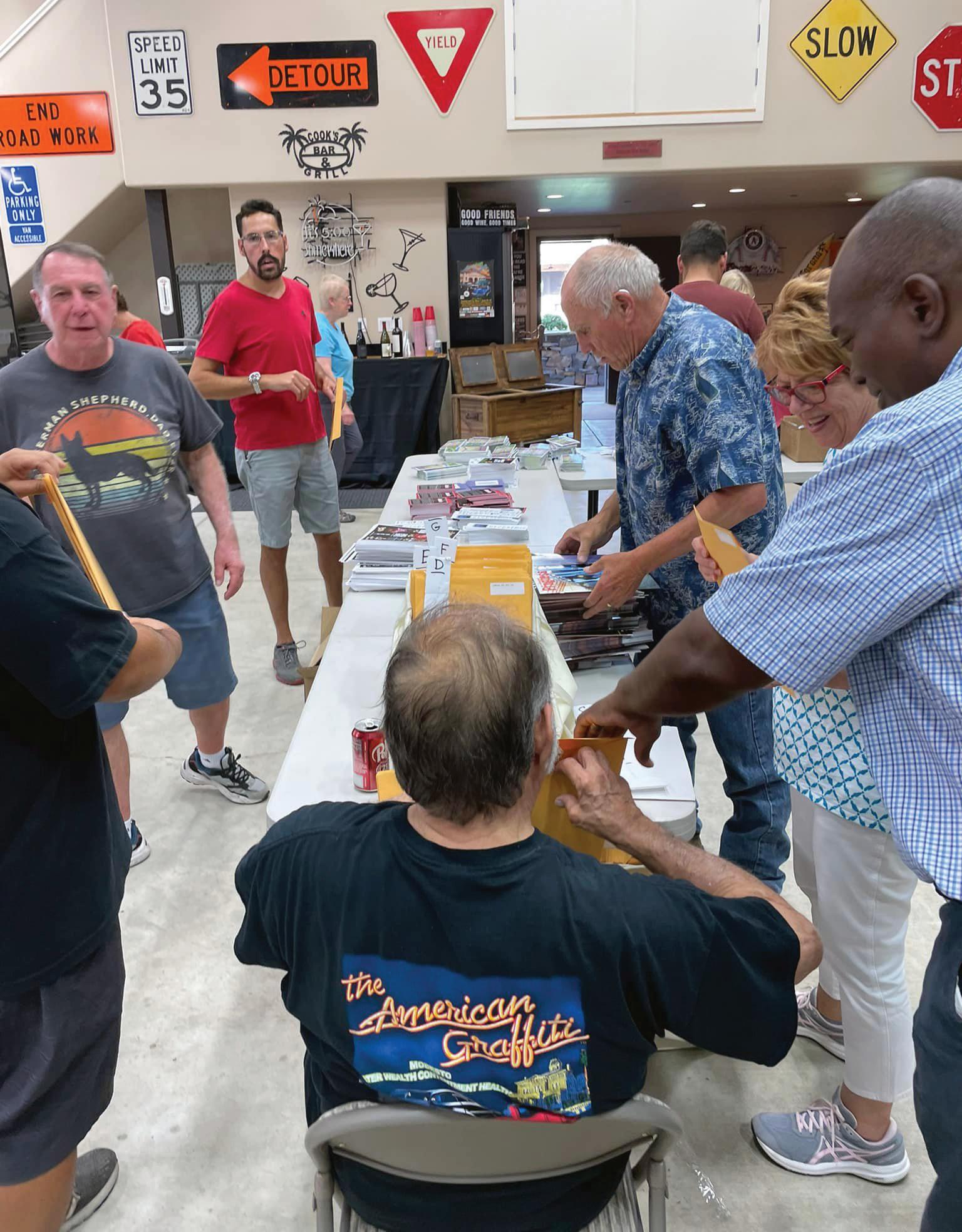
There would be no annual American Graffiti Car Show and Festival without the vision and dedication of the North Modesto Kiwanis Club.
The Modesto service club has a long history of giving back to the community by raising money for local nonprofit organizations. The club’s first fundraiser was Chicken a Go Go, which ran for 50 years before the club then started hosting the Concours d’Elegance Car Show. That annual car show was the spark that led to the founding of the American Graffiti Car Show and Festival 25 years ago. John Sanders led the show for almost two decades, before handing it off to fellow Kiwanian Brent Burnside.
Burnside, owner of Burnside Body Shop, was a natural choice to take up the Graffiti Festival mantel as he has a longtime love of cars and cruising. Burnside said he has fond memories of watching cars cruise downtown Modesto with this dad when he was a kid in the late 1970s.
“There was not much to do Modesto back in the day. But we have plenty of flat streets and long streets to do a drag race. So, the kids would hang out at the Burgess diner just like the movie (“American Graffiti”). You know it was for three or four
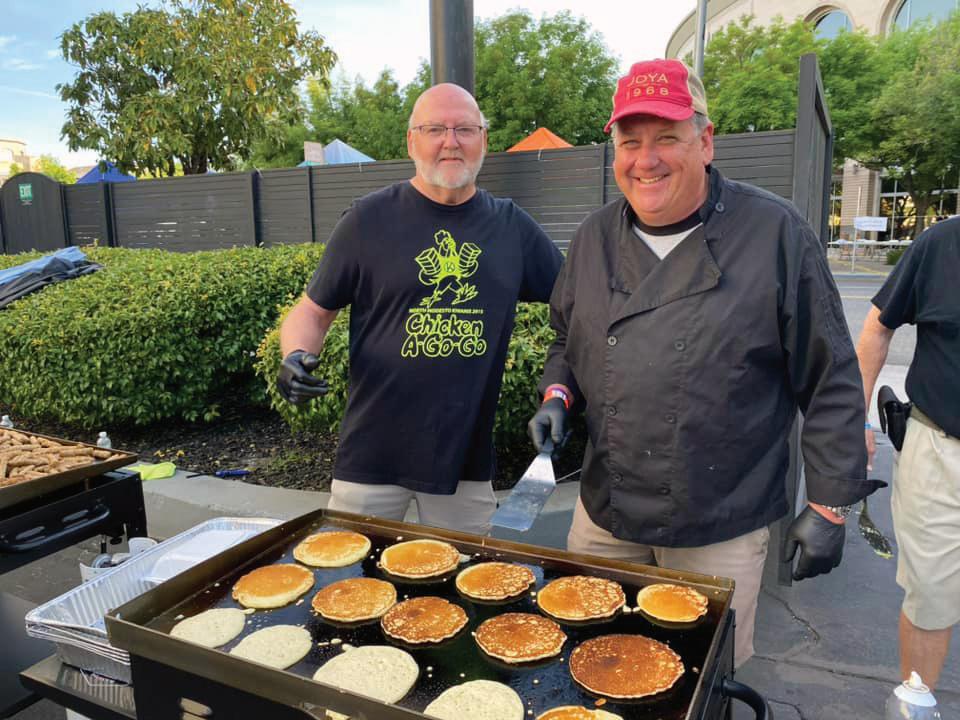
months during summer and it was a weekly event, cruising,” he said.
The festival is now the biggest event for the club, with planning happening year-round and involving 150 to 200 volunteers. Over 90% of the club’s overall funds comes from the festival, with all of it going to children’s programs, scholarships and Christmas baskets for families in need throughout Stanislaus County.
The festival has grown so much, it’s become legendary for a Central Valley car show event.
“A car show that gets over 1,000 cars is pretty unique, especially here in the Valley…It’s just steadily grown since I've been in it. I remember my first year we reached 600 (cars) in the parade, and now to be over 1,000 before COVID. Now we've agreed, just for safety reasons number one, and so the cruisers get a chance to go around a couple times instead of sitting so much because we had so many cars, we cap it at 1,000,” said Burnside.
Burnside said the club is hoping to continue the festival for years to come by drawing in more of the younger crowd. While the Graffiti Festival is based on the 1973 movie “American Graffiti” starring Richard Dreyfuss, Ron Howard, Cindy Williams and Candy Clark, among others, younger car enthusiasts are more likely to connect with the car
culture in the “Fast & Furious” films that span from 2001 through 2023, said Burnside.
To encompass a broader range of car enthusiasts, the club started getting involved in the Cars and Coffee group, a movement that can be seen in cities across the country.
“So, it's for any type of car, motorcycle, any year, make or model, and it's really to celebrate cars. For a lot of folks their car is their pride and joy. I'm a hot rod guy myself and I like having a couple of classic cars, but they take a lot of work. The nice thing about Cars and Coffee is everybody you can do their own style,” he said.
While widely recognized for their Graffiti Festival & Car Show, the North Modesto Kiwanis Club is also known as being pancake specialists. They have hosted over 800 pancake breakfasts at the Modesto Senior Center over the past several years and have prepared a pancake breakfast for the hundreds of volunteers during Love Modesto for the past two years.
The club also hosts the annual Breakfast with Santa event in downtown Modesto every holiday season.
For more information about the club, visit https://k06186.site.kiwanis.org/ ●
‘Get in the driver’s seat’
 By SABRA STAFFORD
By SABRA STAFFORD
Elisa Trevino has some life advice that she freely administers to anyone.
“Don’t relegate yourself to the passenger seat,” she said. “Get in the driver’s seat.”
Trevino put that advice into action when in June of 2021, she founded the Chicanas Car Club, a club geared towards women interested in the low-riding culture and cars.
“I was seeing more and more ladies start to come out and cruise,” Trevino said. “The car club world and the culture of low-riding has always been male-dominated and I started thinking that it would be awesome if the ladies could start their own club.
But would the men accept it? And more than that, would they respect it? We were the wives or the girlfriends. However you defined it, the women were always in the passenger seat. I thought that it was time we were in the driver’s seat.”
The Chicanas Car Club was born and it didn’t take long before the membership started to grow.
“The empowerment behind it was phenomenal,” Trevino said. “Not only that it started uniting us in a whole new way but it was also women supporting women. And the me were big supporters of it too.”
Trevino has a 1965 Impala that she has
owned since she was 21 years old.
“I really never drove it when I was younger,” Trevino said. “I started in real estate when I was 21 and it was hard enough being a Chicana in that world back then. I felt like I already didn’t fit in. I had the big hair and the dark lips and was into the low-riding culture. I felt like if I went out driving my car, it would just feel like I was being stereotyped. So, I didn’t drive the car. Years went by and in 2007 is when the car was transformed into what it is today. I would drive it around, but not very often and definitely not to work. Then, I think it was around 2012 or 2013, that I just


stopped caring what people might think. This is who I am. People are either going to appreciate me and my love for the culture or they’re not. I felt like I needed to inspire and proper my culture and myself.”
The Chicanas Car Club is about more than cruising and car shows. For them it is about celebrating a culture and lifting up anyone in need.
“It’s not just a car club anymore,” Trevino said. “It has become like a

community outreach program.”
The club routinely does fundraisers and offers their support and resources to those in need. They also do collaborations with non-profits all over the region. Their big show is the Women of Lowriding Car Show, which will be held Oct. 6 at the Merced County Fair. For more information, including registration, call (209) 233-7863 or email womenoflowriding@gmail.com. ●

